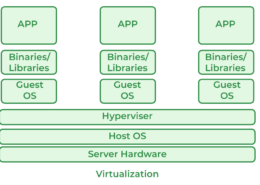What is cloud computing and different areas of cloud computing?
Advantages of Serverless Computing: Cost Efficiency: Serverless architectures often follow a pay-per-use model, where you only pay for the actual resources consumed. This can lead to cost savings compared to provisioning and maintaining servers in a traditional setup. Scalability and Elasticity: SerRead more
Advantages of Serverless Computing:
- Cost Efficiency:
- Serverless architectures often follow a pay-per-use model, where you only pay for the actual resources consumed. This can lead to cost savings compared to provisioning and maintaining servers in a traditional setup.
- Scalability and Elasticity:
- Serverless platforms automatically handle scaling based on workload. They can scale up or down in real-time, ensuring optimal performance without manual intervention.
- Simplified Operations:
- Developers can focus more on writing code and less on managing infrastructure. Serverless providers handle maintenance tasks such as patching, scaling, and availability.
- Faster Time to Market:
- Developers can deploy code faster because they don’t need to manage server provisioning or deployment environments. This agility can accelerate the development and release cycles.
- Automatic High Availability:
- Serverless architectures are designed for high availability. Providers manage the underlying infrastructure, reducing the risk of downtime due to hardware failures.
Potential Drawbacks of Serverless Computing:
- Vendor Lock-in:
- Adopting serverless often ties you to a specific cloud provider’s ecosystem. Portability of applications can be limited, making it harder to switch providers.
- Cold Start Latency:
- Serverless functions may experience latency when they’re invoked for the first time or after being idle for a while. This “cold start” can impact performance for latency-sensitive applications.
- Monitoring and Debugging Complexity:
- Serverless applications can be harder to monitor and debug compared to traditional architectures, especially when functions are distributed across different services.
- Resource Limitations:
- Serverless platforms impose limits on resources like memory, execution time, and concurrent executions per function. Applications must be designed to operate within these constraints.
- Potential Cost Overruns:
- While serverless can be cost-effective for sporadic workloads, continuous high-volume usage can lead to unexpected costs. Careful monitoring and optimization are necessary to prevent cost overruns.


Cloud computing refers to the delivery of computing services—including servers, storage, databases, networking, software, and analytics—over the internet ("the cloud"). This model offers on-demand access to a shared pool of configurable computing resources, which can be rapidly provisioned and releaRead more
Cloud computing refers to the delivery of computing services—including servers, storage, databases, networking, software, and analytics—over the internet (“the cloud”). This model offers on-demand access to a shared pool of configurable computing resources, which can be rapidly provisioned and released with minimal management effort or service provider interaction.
Key areas of cloud computing include:
1. Infrastructure as a Service (IaaS): Provides virtualized computing resources over the internet. Users can rent virtual machines, storage, and networking infrastructure on a pay-as-you-go basis, allowing for scalability and flexibility without investing in physical hardware.
2. Platform as a Service (PaaS): Offers a platform allowing customers to develop, run, and manage applications without worrying about the underlying infrastructure. PaaS provides tools and frameworks for building, testing, and deploying applications, speeding up development cycles.
3. Software as a Service (SaaS): Delivers software applications over the internet on a subscription basis. Users access applications through a web browser without needing to install or maintain software locally. Examples include email services, office productivity suites, and customer relationship management (CRM) software.
4. Serverless Computing:Also known as Function as a Service (FaaS), serverless computing abstracts the underlying infrastructure management from developers. It allows them to focus solely on writing code in the form of functions that are triggered by events, automatically scaling based on demand.
Cloud computing has revolutionized IT by enabling organizations to reduce costs, increase agility, and scale operations more efficiently. It supports a wide range of industries, from startups to large enterprises, offering solutions for storage, data analytics, machine learning, and more, driving innovation and digital transformation across the globe.
See less